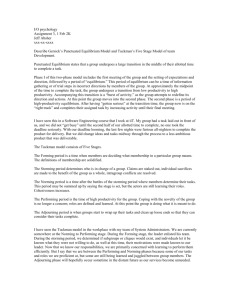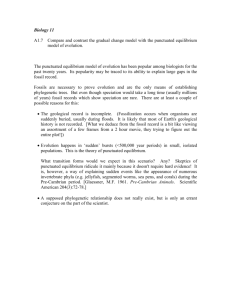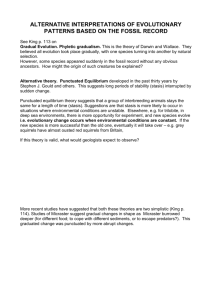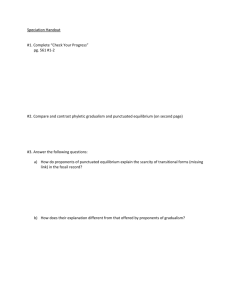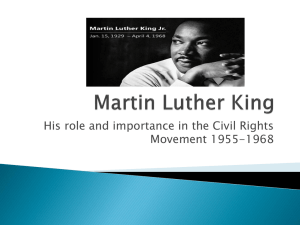Group Development
advertisement
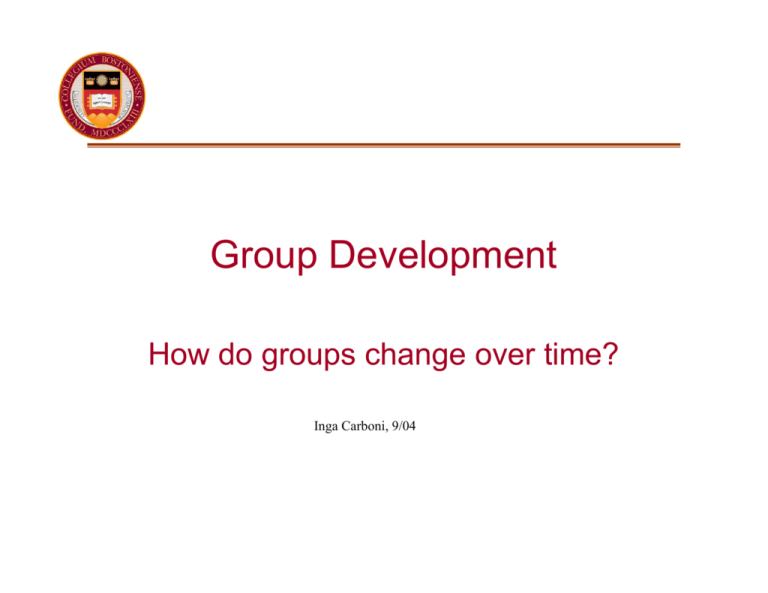
Group Development How do groups change over time? Inga Carboni, 9/04 Group Development Theories Theories • Sequential stage theories (e.g., Bennis & Shepard, 1955; Tuckman, 1965) • Phase theories (e.g., Bales & Strodtbeck, 1951; Bales, 1965) • Punctuated equilibrium (e.g., Gersick, 1988, 1989) How do groups develop? Successive Stage Theories • Groups develop by going through a successive series of changes • Move from an immature state to a mature state Phase Theories • Groups are continually shifting their focus from one focal concern to another focal concern Punctuated Equilibrium • Long periods of equilibrium are punctuated (interrupted) by periods of radical change and reorientation. Bennis & Shepard, 1956 Based on observations of T-groups. Groups have two fundamental issues to resolve: 1. Their relationship with authority and structure 2. Their issues of intimacy and interdependence among members Bennis & Shepard, 1956 Two “phases,” each with three subphases Phase One: Dependence 1. Dependence-Flight The group as a whole searches for a common goal. 2. Counterdependence-Fight Group splits into three groups: dependents, counterdependents, and independents. 3. Resolution-Catharsis Dependence issue resolved. Bennis & Shepard, 1956 Two phases, each with three subphases. Phase Two: Interdependence 1. Enchantment/Flight Everything is “sweetness” and “light.” 2. Disenchantment-Fight Group splits into two groups: personals and counterpersonals. 3. Consensual Validation Acceptance of group (and group members) as they really are. Valid communication. Bales, 1965 Equilibrium Model of Development (phase theory) Based on observations of problem-solving groups. Groups must perform the task and, in order to do so, they must form and maintain a productive social and emotional system. Bales, 1965 Groups oscillate between focus on: • task-oriented issues • socio-emotional (i.e., interpersonal) issues Bales, 1965 Equilibrium Model of Development (phase theory) • Orientation What is the problem? • Evaluation How do we feel about it? • Control What are we going to do about it? Bales, 1965 Task-oriented acts Ask questions • Ask for orientation, ask for opinion (evaluation), ask for suggestion (control) Give answers • Give orientation, give opinion (evaluation), give suggestion (control) Tension escalates as actions move toward control. Bales, 1965 Socio-emotional acts Express positive reactions • Show solidarity, show tension release, agree Express negative reactions • Disagree, show tension, show antagonism Bales, 1965 Equilibrium is reached when: • problems created by task-related acts are balanced by socio-emotional adjustments and • problems created by socio-emotional acts are balanced by task-related adjustments. Tuckman, 1965 Sequential stage theory • • • • • Forming Storming Norming Performing Adjourning (added in 1977) Tuckman, 1965 All groups move through a predictable sequence of stages. Groups move from an immature state to a mature state. Each stage has both specific task and socio-emotional issues. Tuckman, 1965 Forming • • • • • Group members explore issues of dependency and inclusion "Will I be accepted by others in the group?" "What will I have to do in this group?" Heavily dependent upon leader Status is likely to be based on general characteristics, such as sex Tuckman, 1965 Storming • • • • Group starts to feel comfortable enough to express their real feelings and values One major point of conflict is perceptions regarding the leader Leadership style may need to change if the group is to develop Groups may not leave this stage Tuckman, 1965 Norming • • • • “We made it!” Group members care enough about the group to stick it out when the going gets tough Changes in dysfunctional norms Goal clarity Task-oriented Tuckman, 1965 Performing • • • • Unified culture and structure; high cohesion Some degree of deviation is tolerated and even encouraged as way to encourage innovation and creativity. The group has adopted norms that encourage productivity, high performance standards, and is highly effective at moving toward goals. Conflict resolution strategies are in place as is a confidence that the group can resolve them before they move to a destructive level. Tuckman, 1977 Adjourning • Some stress and anxiety • In order to transfer learning, need to formalize (or ritualize) termination (e.g., end party, etc.) Criticisms of stage theories • Don’t describe the underlying psychological mechanism moving a group from one stage to another. • Don't specify the time groups need or do spend in each stage. • Don’t take into account the external environment. Environments can constrain development but cannot alter it. Gersick, 1988, 1989 Qualitative study (8 natural groups) Laboratory based study (8 problem-solving groups) Methods: observation, audiotape, videotape, transcripts, interviews Critical points: • Initial meeting • Midway point • Last meeting/completion of work Gersick, 1988, 1989 Punctuated Equilibrium All groups move through periods of inertia separated by a brief period of transition. • Phase 1 • Transition • Phase 2 Gersick, 1988, 1989 Periods of inertia are marked by the presence of deep structures and incremental changes. Transition times are triggered by a problem. “We need to change the way we’re working.” Transition times are “windows of opportunity” not inevitable (or inevitably good) changes Arrow, 1997 Additional triggers for change • • • a strong external shock a change in group composition any dramatically novel state of affairs (e.g., persistent poor performance) Criticisms of punctuated equilibrium • Does it describe group development or deadline pressure? • Limited usefulness to managers. • Narrowly focused (e.g., may only be applicable to temporary creative problem-solving groups). • Ignores socio-emotional development. How do groups develop? Successive Stage Theories • Groups develop by going through a successive series of changes • Move from an immature state to a mature state Phase Theories • Groups are continually shifting their focus from one focal concern to another focal concern Punctuated Equilibrium • Long periods of equilibrium are punctuated (interrupted) by periods of radical change and reorientation. Group Discussion Question • Based on your personal experience, which theory do you think best describes group development? Why or why not? Group Discussion Question • You are a manager in charge of assembling a new team to bring a product to market. How would you use your knowledge of group development to help this team develop as effectively as possible?
